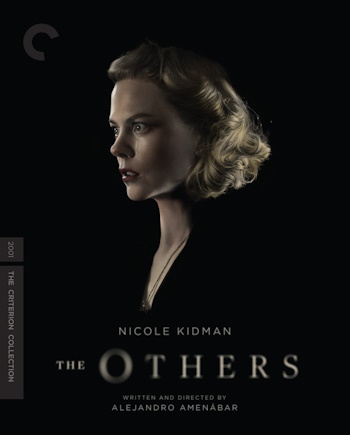The Others
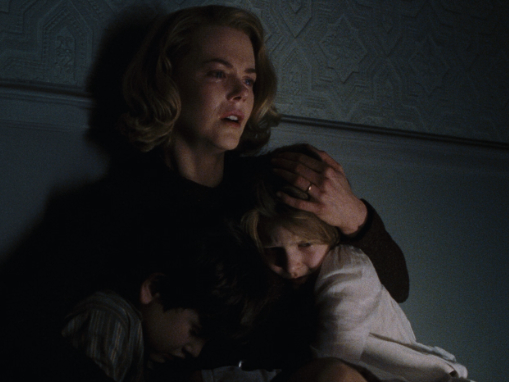
See more details, packaging, or compare
Synopsis
A remote manor; hushed, candlelit atmosphere; and shivery, supernatural menace. With his first English-language feature, Chilean Spanish writer-director-composer Alejandro Amenábar resurrected the classic gothic chiller to create a ghost story of uncommon emotional resonance. Nicole Kidman stars as a World War II–era mother whose imperiousness masks a terrifying pain, as she keeps her light-sensitive children enshrouded in darkness on her country estate. The arrival of three new servants punctures her insular world—and seems to disturb the balance between the living and the dead. With each stunning twist and turn, Amenábar immerses us more deeply in a realm haunted not only by spirits but also by guilt, trauma, and repression.
Picture 8/10
The Criterion Collection presents Alejandro Amenábar’s The Others on 4K UHD, sourcing the 2160p/24hz ultra high-definition presentation (in SDR) from a new 4K restoration performed by StudioCanal, sourced from the 35mm original camera negative. Criterion also includes a standard Blu-ray that includes a 1080p presentation of the film alongside all of the release’s video supplements.
After being stuck with a super-dated master, seeing the film from a fresher, cleaner scan and restoration is terrific, even if it’s still not all I feel it could be. Part of that can come down to the film’s look, how it was filmed, and its use of both practical and digital effects. For example, in the latter case, the film features a lot of fog that always envelopes the film’s central household, which gets thicker as the characters venture further away. In the included optional commentary, Amenábar talks about the fog effects (with examples offered in some of the included video features), explaining they were created through a mix of practical products (like fog machines) and digital effects. That mix of techniques could play into how these sequences appear here because there are instances where the fog is rendered naturally, blending cleanly to expose the many layers. Then, there are other instances where the fog can appear a bit buzzy, if not terribly so. I would usually guess that the digitally inserted fog may be the reason for these more problematic instances since we’re talking about early 2000s digital effects, but when going through the features on the fog effects and seeing which sequences were created digitally, it becomes evident that this is not always the case.
Grain is rendered well enough outside those foggy moments, retaining a natural look through much of the film. Artifacts are rarely an issue, but banding is evident during the opening credits, which may have been digitally created. Yet even if that is the case, I didn’t notice the same banding effects on the Blu-ray’s presentation. Thankfully, the effect doesn’t pop up elsewhere in the film, as it would have made it unwatchable considering the numerous dark scenes with single light sources.
And speaking of the film’s dark photography, I should point out the one big disappointment around this release: the lack of HDR. This choice, I assume, can be attributed to the film’s director since StudioCanal’s 4K edition also lacks it. Though I think it would have benefitted the film, the SDR presentation is ultimately okay, handling the dark photography impressively, even when it comes to the shadows. Black levels are still profound, and the range is wide enough to reveal details and highlights in the shadows. Light from the gas lamps also blends nicely into the dark, with clean gradations. The colors look good, despite the fact the film isn’t all that colorful, with the only real pop of it being (outside of the film’s closing shots) purple pieces of clothing that Kidman’s character wears. These pieces could look a bit drab in older presentations, almost brown, but I thought they featured a fabulous vibrancy here.
So, all said, the digital presentation looks quite good, and I am incredibly pleased with it. Regarding the restoration, however, I was stunned by the condition of the print materials. It’s a newer film, so I’d like to think that the original film materials had been stored appropriately and that the film didn’t require extensive restoration work. Yet, there is still an unexpected number of marks and imperfections. They’re limited to small bits of dirt and other markings, but they come up regularly. Amenábar mentions in the commentary how he wanted the film to have an “old” look, so I guess it’s possible that plays into it, but I didn’t see any mention in direct relation to the restoration. Ultimately, their appearance isn't a substantial concern and can be looked over mostly. I guess I was just surprised to see it all there to begin with.
It could look better, but the presentation is still a drastic and significant improvement over the previous Blu-ray and DVD releases and still sports a solid film-like presentation.









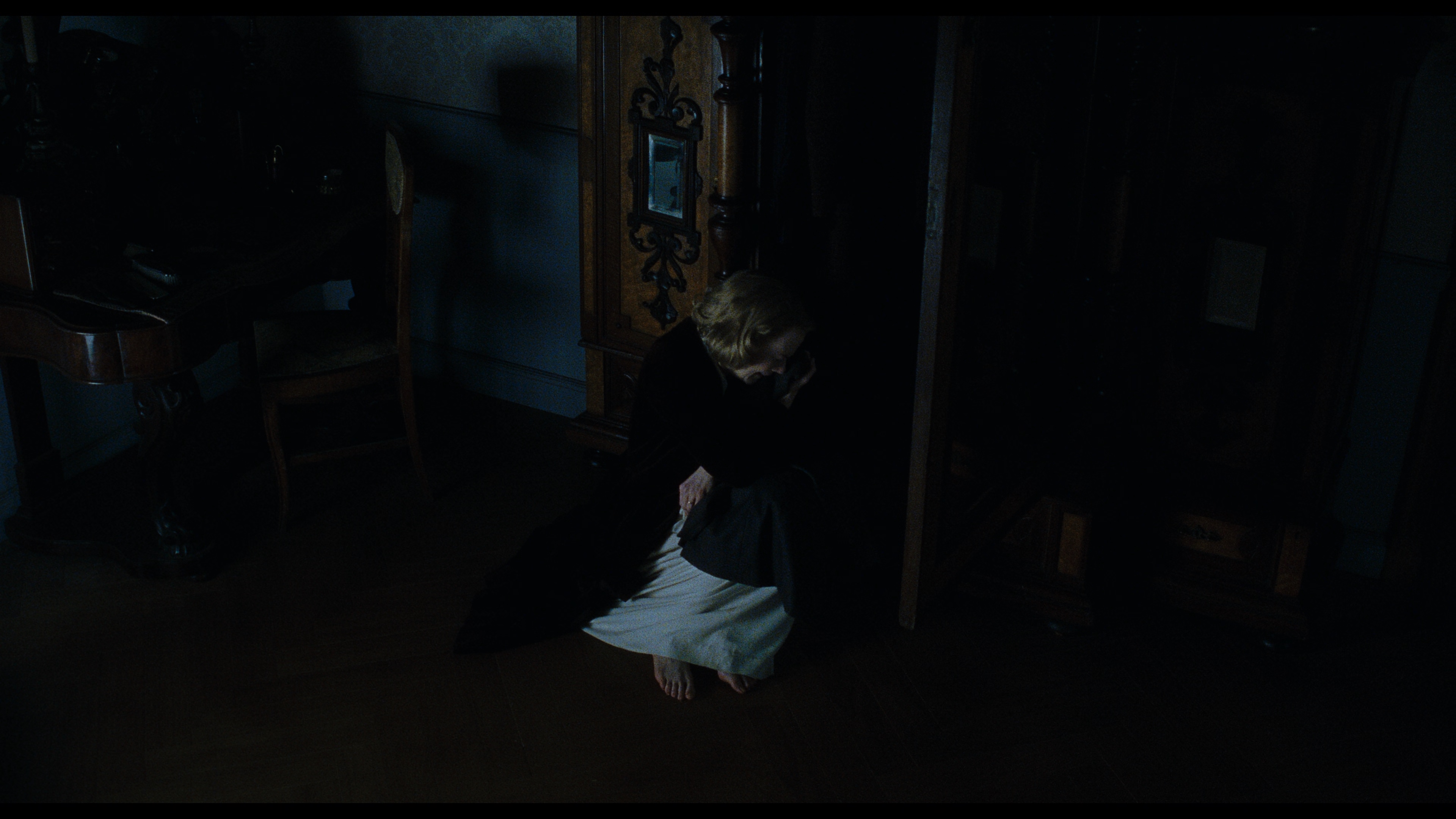

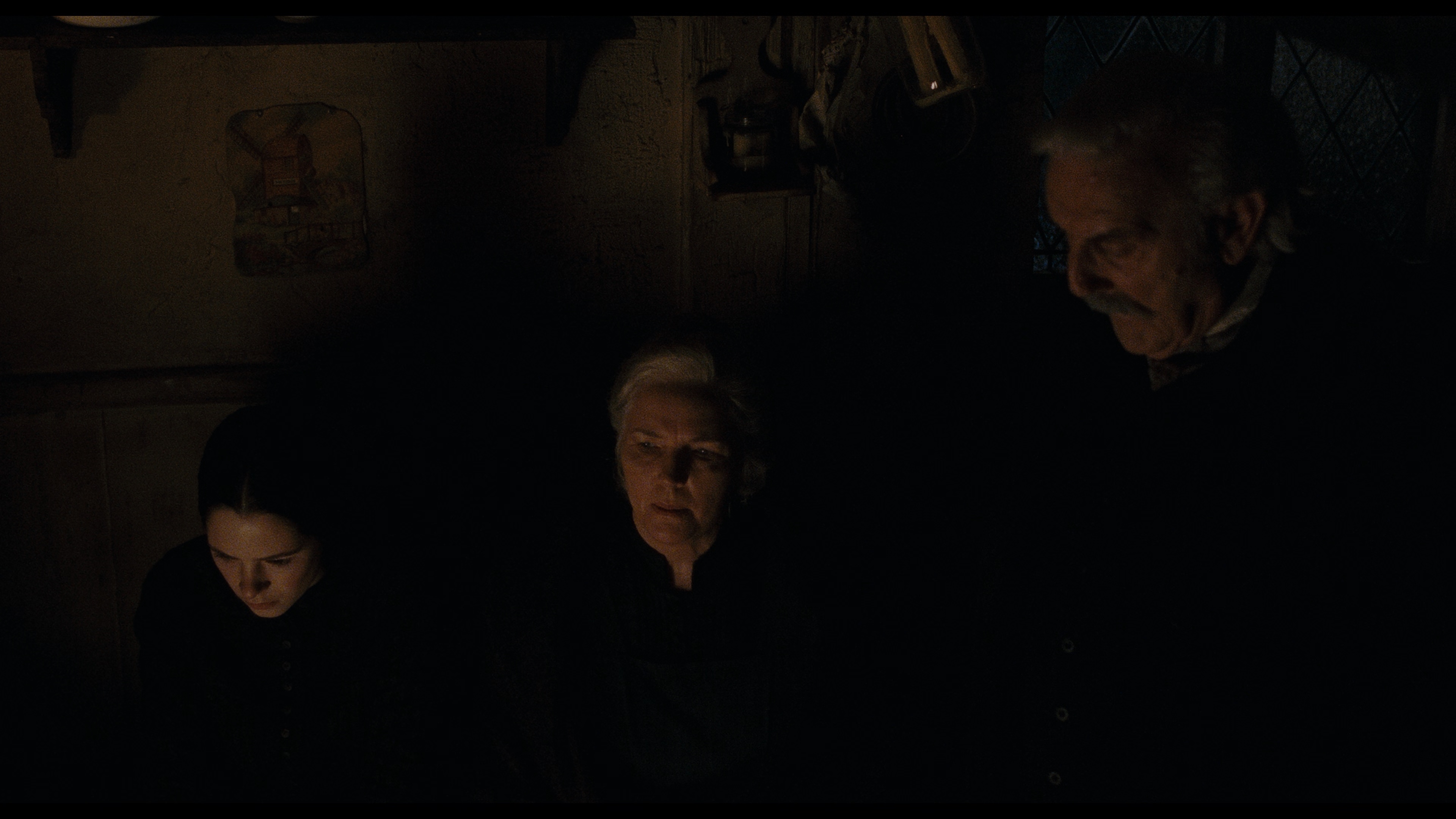


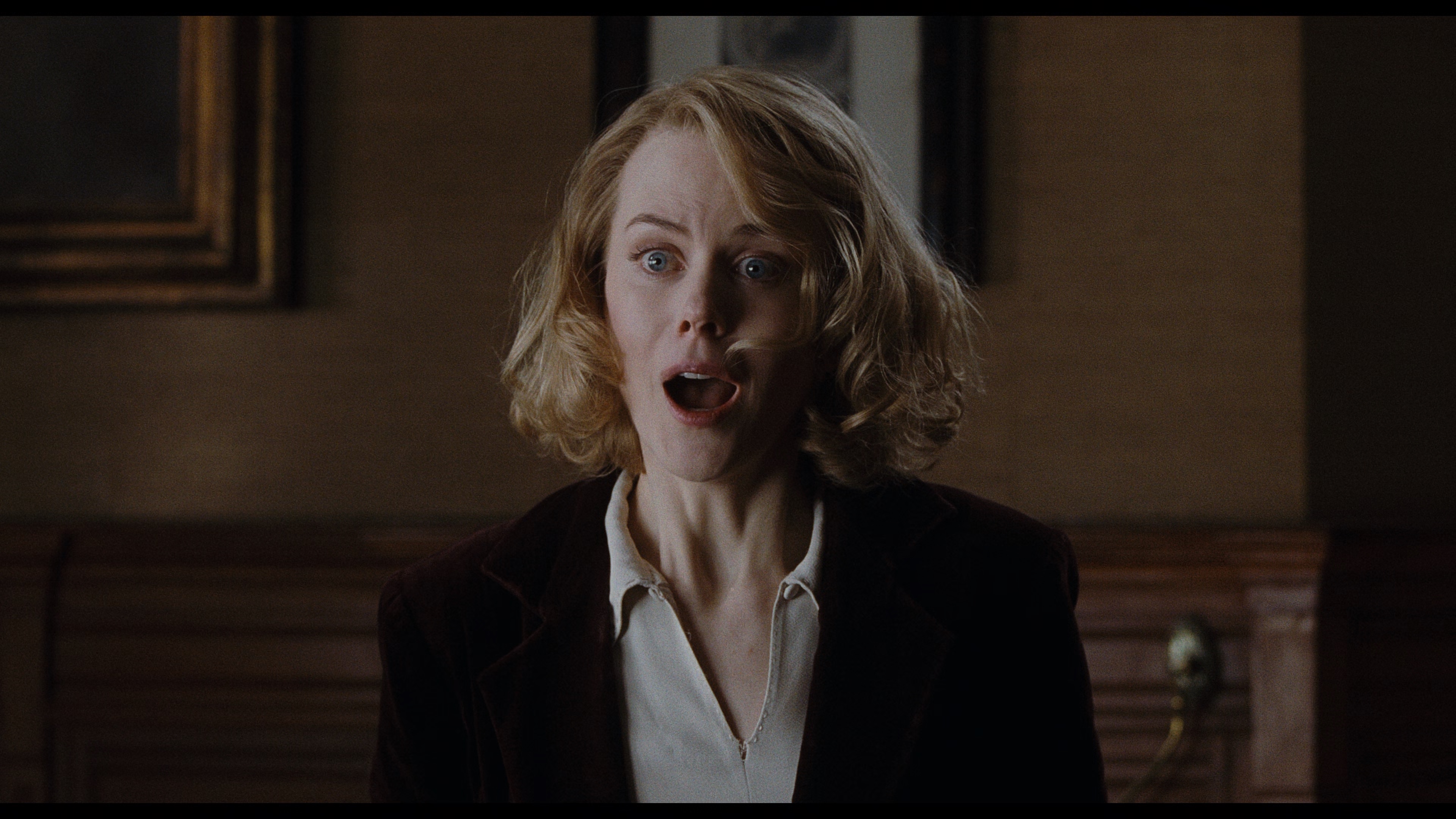





















Audio 8/10
Amenábar talks about the design of the film’s surround sound mix extensively throughout the included commentary track, remarking on how he purposely kept it low-key throughout most of the movie to both subtly tell the audience what is actually going on without explicitly spelling it out, and also to make some of the film’s central sequences more effective when the full force of the surround system is appropriately utilized. For this edition, the surround soundtrack has been updated to Dolby Atmos, a practice I’m typically not fond of, but I do have to admit it ends up working out nicely for this film.
What helps this one work is the fact that the sound mix is not all that aggressive to begin with. Outside of the film’s score, which does utilize the surround channels, most of the audio, consisting of voices and sound effects, is focused on the front three channels. Dynamic range isn’t all that wide on average, and volume levels are kept generally low, though everything is still sharp and clear, easy to hear.
Atmos comes into play through the film’s creepier moments and nicely inserted jumps, whether it be a voice coming from behind you, what sounds like footsteps running above you, or a loud bump in the night. I always found these moments effective in the previous 5.1 presentations, but I found them brilliant here, despite my configuration only being 5.1.2, with the Atmos speakers in the front.
It’s still not that showy a soundtrack presentation, but I found it incredibly effective when it needs to be.
Extras 8/10
Criterion packs on a good amount of material for their new special edition of the film, starting with a new Spanish-language audio commentary featuring director Alejandro Amenábar, presented with English subtitles. The track is incredibly dense; Amenábar talks about the story's development, casting, and shooting before getting into the technical details of the film, which covers photography, sound design, and the use of digital effects. He also appears to have impressively timed his comments appropriately in these latter areas. Hence, they coincide with the action on screen, so when he’s talking about the film’s sound design and how he used the surround configuration, it’s timed to a moment where the surrounds kick in, highlighting his comments.
On top of all of this, he also talks about working with the actors, particularly Kidman and her two child co-stars, and the story and the themes that interest him. This also leads to a discussion about the release of another film just as they started production, which shared similarities storywise, causing him to worry about how his movie would ultimately be received. After getting past his initial concerns, he decided to go ahead with the film, making changes so the audience couldn’t pick up quickly on where the film was going and be sure that specific plot points didn’t come out of nowhere. He also has a few other interesting bits of trivia, particularly around producer Tom Cruise’s involvement.
It's a wonderful commentary, surprisingly packed with tremendous detail that the filmmaker easily recalls despite the film being over two decades old.
Though that commentary does not appear on StudioCanal’s edition, I assume it was recorded for a Spanish-language release of the film and is not exclusive to Criterion’s. For exclusive content, Criterion includes a new piece featuring Amenábar in conversation with film critic Pau Gómez, running 36 minutes. This conversation focuses more on the film’s themes around belief and religion, with Amenábar addressing his beliefs and morals, referencing his earlier films Thesis and Open Your Eyes. He covers some of this in his commentary, mainly how many horror elements within the film have a basis in his childhood fears and experiences, but he expands a bit more here, getting into his time at a Catholic boarding school. He also talks about other Spanish horror films that came out around the same time (The Orphanage).
To focus on the making of the film, the disc includes a couple of making of documentaries. One is a 29-minute Spanish-language making-of-featurette from 2002 (not the same as the one found on the North American DVDs and Blu-rays) featuring interviews with the cast and crew. It covers the same ground as other features on the disc, but its benefit is that it features footage from location scouts, the expansive set (which looks to have been laid precisely as the house would have been), and interviews with the actors, including Eric Sykes and Fionnula Flanagan. It also features footage from the Spanish-language dub of the film, which Amenábar talks about in the commentary (sadly, Criterion chose not to include it as an option with the film here).
The newer StudioCanal-produced making-of documentary, the 51-minute A Look Back at “The Others,” proves to be the better-produced option, though, featuring new interviews with Amenábar, producer Fernando Bovaira, and actors Nicole Kidman and Christopher Eccleston. Despite the lack of a lot of behind-the-scenes footage (available elsewhere on the disc anyway), it provides a far more thorough look into the making of the film. Impressively, even though it covers some of the same ground that Amenábar’s commentary does, it doesn’t repeat a lot and still manages to expand in other areas, like how Miramax would become involved. It also proves beneficial getting Eccleston and Kidman to offer their thoughts as they look back, the two recounting how wonderful an experience it was (despite Eccleston only being on set for a couple of days) and how the film ultimately boosted their careers, Kidman saying that it showed she could carry a movie and led to more roles. In the end, it is more of a talking-head piece, but it still proves very engaging.
The remaining material was created for previous home video releases or assembled from similar footage, including about 8 minutes worth of deleted scenes, which are all essentially slight trims outside of an expanded scene featuring Eccleston (the director does talk about some of these scenes in his commentary). There’s the 4-and-a-half minute featurette On the Set which presents footage of Amenábar directing his two young actors (identical to a featurette “about” Amenábar on the previous North American DVDs and Blu-rays) followed by featurettes covering the film’s art direction (running less than 3 minutes and covering the film’s sets with commentary by Benjamin Fernandez) and visual effects (running 7 minutes and similar to a feature on the old releases by showing how the digital effects were layered, with added commentary by Felix Berges). Also present is a 6-minute featurette on recording the film’s soundtrack, first showing Amenábar writing the score before moving on to footage from a recording session with the orchestra. The disc then closes with a 3-minute featurette about the photo shoots for the photos of the dead within the film, 3 minutes’ worth of audition footage for Alakina Mann and James Bentley, and then the film’s North American trailer, which looks to have been taken from a video cassette.
Philip Horne provides an essay on the film exploring its Gothic horror influences, but sadly, outside of that and the few comments Gómez makes in the new interview, there are no new scholarly additions. Past that, the disc at least does a spectacular job covering the film’s production through the excellent new commentary and documentary.
(All video features can be found on the standard Blu-ray disc. The audio commentary is included with both the 4K and high-definition presentations.)
Closing
Even if there is room for improvement, the new 4K presentation bests all previous releases, delivering a sharp, film-like presentation.
